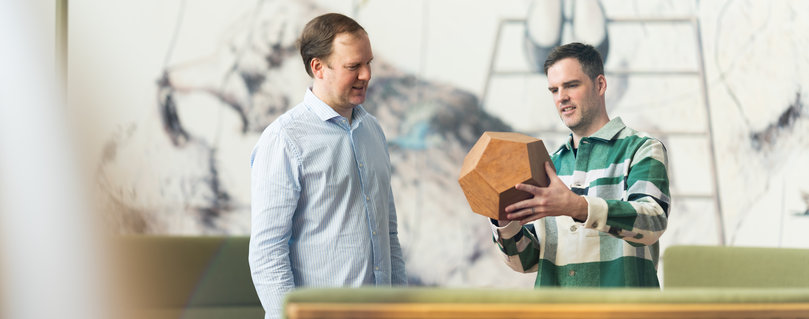Mathematics makes new breakthroughs possible
Mathematical discoveries can be hundreds of years old by the time they are applied to enable space travel, mobile telephony, quantum computers, DNA analysis, AI and much more. What today’s results will lead to is impossible to say. Mathematics provides tools, and without these tools the problems of tomorrow risk remaining unsolved, and ideas being left in the desk drawer.
Research results in the field of mathematics are eternal, whereas in other disciplines they are valid only until they are replaced by new ones. What is proven to be true is true and remains forever part of the collective knowledge upon which other mathematicians build. It enables new applications today, or in hundreds of years. For this reason, mathematicians are not usually driven by the concept of direct benefit.
“Curiosity is what drives me,” says Johan Öinert, professor of mathematics.
“Mathematics is creative, it’s about understanding structures. Finding a solution makes you feel euphoric,” says Stefan Wagner, associate professor of the same subject.
Stefan Wagner explains that his plan was originally to study aerospace engineering, but mathematics turned out to be more exciting.
Johan Öinert and Stefan Wagner both work in the fields of noncommutative algebra and noncommutative geometry. This type of mathematics has its origins in quantum mechanics. There are plenty of applications where their knowledge is needed, for example to explain phenomena in biomedicine, coding theory, computer science and, not least, encryption where quantum computers are placing new demands on security and function. Potential is also there to act as a bridge to other research areas.
Classical methods are no longer fit for investigating huge data sets across spaces with dimensions in the hundreds. We need new mathematical methods in order to further develop machine learning and AI, for example, says Johan Öinert.
Mathematicians contribute to breakthroughs in many different scientific fields by understanding the structures behind our current problems. But the horizons for basic research are often long.
“What we solve now in basic research will be picked up by someone else when we’re no longer around. Today’s results can lead to future scientific breakthroughs,” says Johan Öinert.
“The mathematics behind our current payment solutions and GPS is hundreds of years old. Mathematics is the foundation to pretty much everything,” says Stefan Wagner.
Explaining natural phenomena and the structures of our planet and the universe using mathematical reasoning is a strong driving force in the research. And if mathematics is the language of explanation, then geometric figures are the letters. Geometric objects are traditionally thought of as concrete shapes. Mathematically, they are studied as collections of points, and with different mathematical tools it is possible to derive properties and relationships between them – for example, by measuring the distance between two points or how much a curve bends. But not everything can be explained by classical geometry, and Stefan Wagner says that one of the pillars of his research is the mathematical foundations of inexplicable phenomena in quantum mechanics.
“We need a new type of mathematics, one without points. We start with classical theory and describe it in a noncommutative way to come up with models and methods that can lead to new insights into quantum mechanical phenomena. Noncommutative geometry is a new and rapidly growing field of mathematics,” says Stefan Wagner.
The urge to challenge ideas, to investigate and dig deeper to understand connections and paradoxes drive both Stefan Wagner and Johan Öinert. The foundation of knowledge is being constantly built upon and mathematicians cite articles published in the twentieth century, which rarely happens in other sciences. In a January 2023 scientific article written by Johan Öinert and his American colleague Karl Lorensen, professor of mathematics at Pennsylvania State University, Banach-Tarski’s paradox from the 1920s was an important starting point.
“We prove the links between structures which might explain phenomena that others have discovered. These results give us a better understanding of infinity,” says Johan Öinert.
5 October 2023
